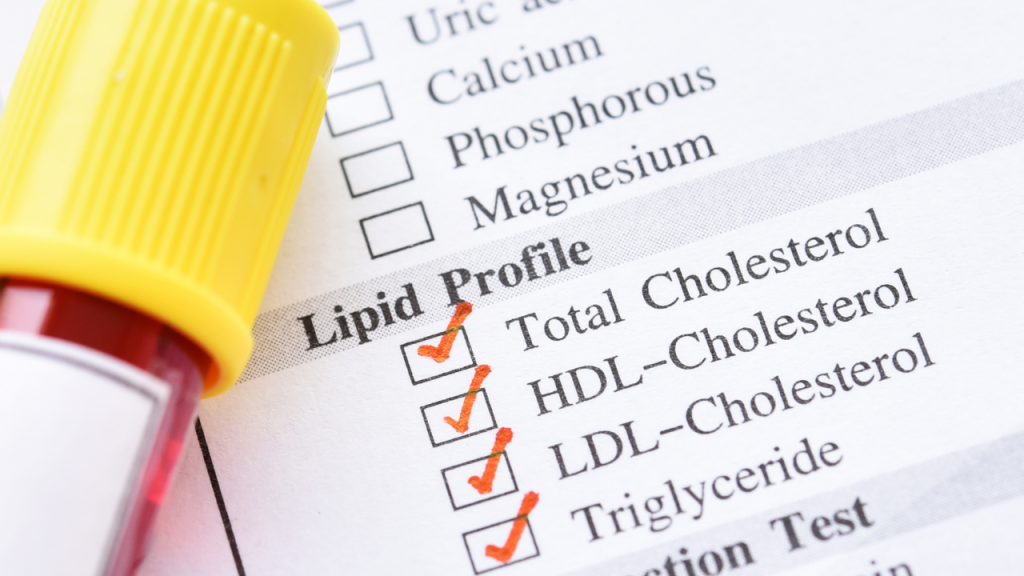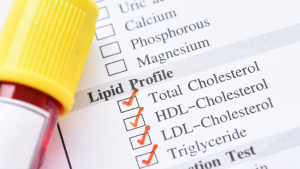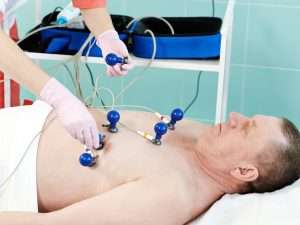Postural Orthostatic Tachycardia Syndrome (POTS) is a disorder of the autonomic nervous system characterized by an abnormal heart rate increase upon standing. It affects blood circulation, leading to symptoms such as dizziness, lightheadedness, fatigue, palpitations, and even fainting. While diagnosing POTS often involves autonomic function testing, blood tests like a lipid profile can provide crucial insights into underlying cardiovascular and metabolic factors contributing to the condition.
At The Heartbeat Clinic in Dallas, we specialize in diagnosing and managing POTS with a comprehensive, patient-centered approach. One of the diagnostic tools we use to evaluate overall health and cardiovascular risks is the lipid profile test. This test measures different fat levels in the blood, which can reveal abnormalities that may be affecting circulation and autonomic function.
Table of Contents
What is a Lipid Profile Test?
A lipid profile test is a blood test that evaluates the levels of different types of fats in the bloodstream. It provides important information about cardiovascular health and metabolic function. The test typically includes measurements of:
- Total Cholesterol – The sum of all cholesterol in the blood.
- Low-Density Lipoprotein (LDL) Cholesterol – Often referred to as “bad” cholesterol because high levels can lead to plaque buildup in the arteries.
- High-Density Lipoprotein (HDL) Cholesterol – The “good” cholesterol that helps remove excess cholesterol from the bloodstream.
- Triglycerides – The most common type of fat in the body, which can indicate metabolic health and energy storage.
A lipid profile is commonly used to assess cardiovascular risk, but it can also provide valuable insights into conditions like POTS, where blood flow regulation and autonomic function play a critical role.
How Does a Lipid Profile Help in Diagnosing POTS?
While a lipid profile test is not a direct diagnostic tool for POTS, it plays an important role in evaluating cardiovascular and metabolic factors that could be contributing to the symptoms.
1. Identifying Dysautonomia-Related Dyslipidemia
POTS is a form of dysautonomia, a disorder that affects the autonomic nervous system. Many patients with dysautonomia experience abnormalities in lipid metabolism, leading to dyslipidemia, which includes:
- High triglycerides
- Low HDL cholesterol
- Increased LDL cholesterol
Dyslipidemia can worsen symptoms of POTS by contributing to vascular dysfunction and impairing the body’s ability to regulate blood pressure and circulation.
2. Assessing Cardiovascular Risk Factors
POTS is not inherently a cardiovascular disease, but it can involve vascular abnormalities such as blood pooling, poor circulation, and endothelial dysfunction. A lipid profile test helps identify whether high cholesterol or triglyceride levels are affecting blood vessel health, which can further contribute to symptoms like dizziness, fatigue, and palpitations.
Patients with POTS may also be at a higher risk for developing metabolic syndrome, which includes:
- High blood pressure
- High blood sugar
- Excess body fat
- Abnormal cholesterol or triglyceride levels
Early detection of these factors through a lipid profile test can help manage POTS symptoms more effectively.
3. Detecting Inflammation and Oxidative Stress
Abnormal lipid levels, especially high LDL cholesterol and triglycerides, are often associated with chronic inflammation and oxidative stress. Many POTS patients experience low-grade inflammation, which can:
- Worsen autonomic dysfunction
- Exacerbate symptoms like brain fog and fatigue
- Impair vascular function, affecting blood flow
By evaluating lipid levels, doctors at The Heartbeat Clinic in Dallas can determine whether inflammation or oxidative stress might be worsening the autonomic instability seen in POTS.
4. Monitoring Nutritional and Hormonal Imbalances
POTS is sometimes linked to nutritional deficiencies, hormonal imbalances, and metabolic disorders, which can also influence lipid levels. Certain conditions associated with POTS include:
- Hypothyroidism – Can lead to high cholesterol and fatigue.
- Adrenal Insufficiency – Affects blood pressure regulation and lipid metabolism.
- Vitamin and Mineral Deficiencies – Such as low B12, magnesium, or iron, which impact energy levels and circulation.
A lipid profile test, along with other metabolic evaluations, helps assess whether these underlying factors need to be addressed as part of a POTS treatment plan.
POTS, Lipid Profile, and Lifestyle Modifications
If a lipid profile test reveals abnormal cholesterol or triglyceride levels, it does not necessarily mean a person has POTS, but it does provide an opportunity to improve overall vascular health and symptom management. Some lifestyle changes that can help regulate lipid levels and potentially alleviate POTS symptoms include:
1. Dietary Adjustments
- Increase healthy fats (e.g., omega-3 fatty acids from fish, nuts, and seeds) to reduce inflammation and improve circulation.
- Reduce processed sugars and refined carbohydrates to stabilize blood sugar and energy levels.
- Consume more lean proteins and fiber-rich foods to support metabolic health.
2. Hydration and Electrolyte Balance
- POTS patients often have low blood volume, making hydration crucial.
- Increasing electrolyte intake (sodium, potassium, magnesium) can help regulate blood pressure and circulation.
3. Regular Physical Activity
- Exercise, particularly recumbent exercises (cycling, swimming), can help improve circulation and autonomic function.
- Resistance training helps enhance vascular tone and blood flow regulation.
4. Medication Management
If lipid levels are significantly abnormal, medications such as statins or fibrates may be prescribed to manage cholesterol and triglycerides. However, lifestyle modifications remain the first-line approach for both lipid regulation and POTS management.
How The Heartbeat Clinic in Dallas Can Help
At The Heartbeat Clinic in Dallas, we take a comprehensive approach to POTS diagnosis and management. Our specialized team performs a variety of tests, including:
- Autonomic Function Testing (Tilt Table Test, QSART)
- Lipid Profile Testing
- Blood Work for Inflammatory Markers and Nutritional Deficiencies
- Cardiovascular and Metabolic Assessments
We tailor treatment plans based on individual test results, ensuring that each patient receives personalized care to manage symptoms effectively.
Why Choose Us?
✅ Expertise in Autonomic Disorders – We specialize in POTS and dysautonomia diagnosis and treatment.
✅ Comprehensive Diagnostic Approach – We assess all possible contributing factors, from lipid metabolism to vascular function.
✅ Personalized Treatment Plans – We combine lifestyle changes, medications, and advanced therapies to optimize symptom control.






